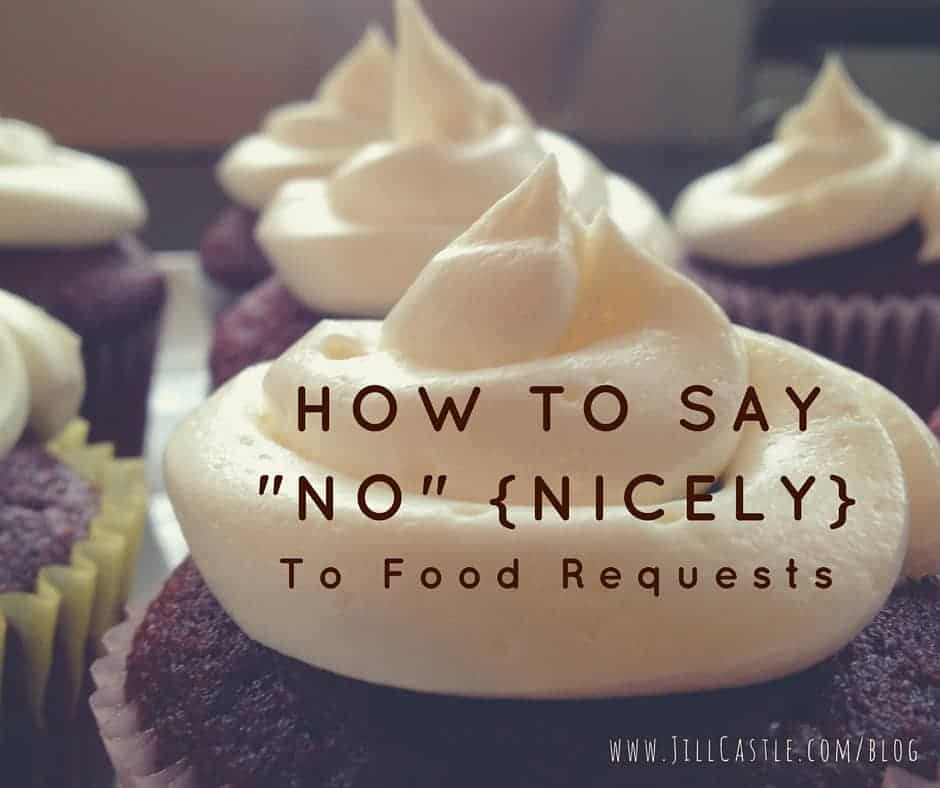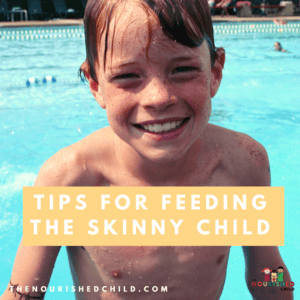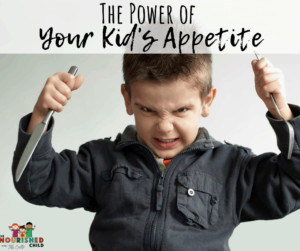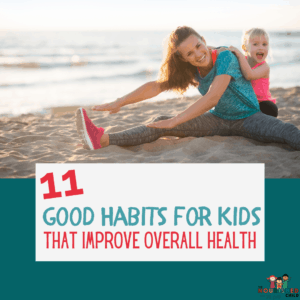How to Fix Iron Deficiency in Toddlers, Kids and Teens
January 24, 2024
Iron deficiency in kids is unfortunately common in the U.S. Learn who’s at risk, how to treat it, and my go-to iron supplements for kids with low iron status.
My first born was diagnosed with an iron deficiency. As a first time mom, I was pretty devastated at the news. As a pediatric dietitian, I knew how important iron was for the developing brain, not to mention immunity, energy level, and regular sleep.
If you have a child who is experiencing an iron deficiency, you’re in the right place! In this article, I’ll cover iron deficiency and iron deficiency anemia, and what you can do to help your child, including my preferred iron supplements for children.
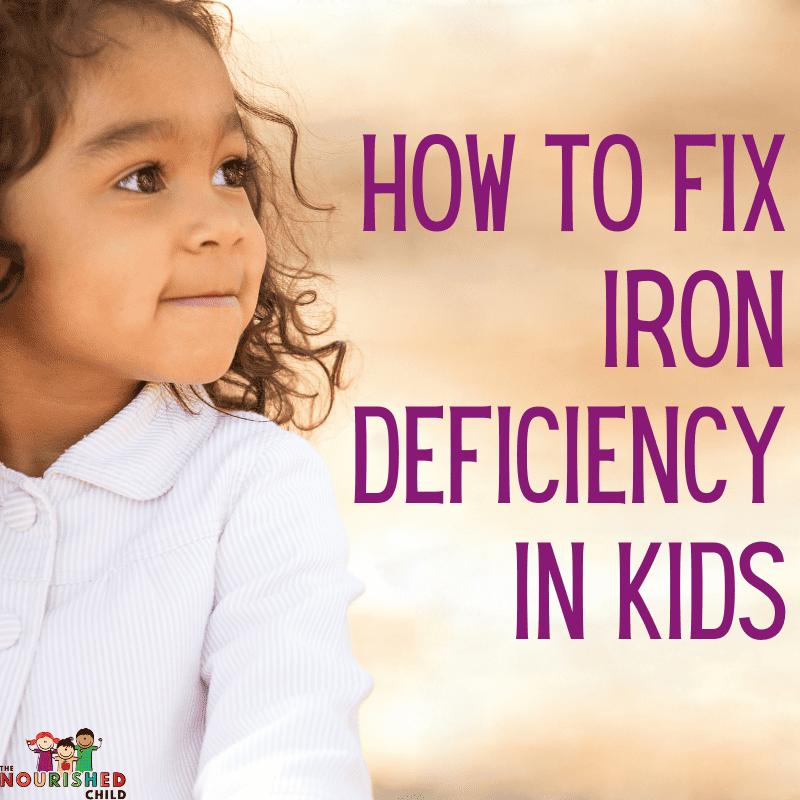
Why is Iron Important for Children and Teens?
Iron plays a role in many functions of the body. In infancy, iron helps build the structure of the brain and the channels that allow information to be communicated across it. Throughout childhood and into adulthood, iron is needed to form hemoglobin which carries oxygen to all cells, organs and tissues.
Prevalence of Iron Deficiency
Iron deficiency is the most common nutrient deficiency worldwide. In the U.S., 20% of children from birth to 4 years are iron deficient. Six percent of children between the ages of five and fourteen experience iron deficiency.
In teen girls and young women, the prevalence of iron deficiency and iron deficiency anemia is 39% and 6%, respectively.
Types of Anemia: Iron Deficiency versus Iron Deficiency Anemia
Iron deficiency is a term describing a decrease in the total amount of iron in the body. Iron deficiency anemia occurs when iron deficiency is severe enough to affect erythropoiesis, or the body’s ability to make red blood cells.
In general, the body’s “pool” of iron remains stable. The body absorbs iron to match what it needs. But when there’s a lack of iron intake, or iron losses are increased, the balance of iron in the body is affected, resulting in iron deficiency, and later, if the situation isn’t reversed, iron deficiency anemia.
What Cause’s Iron-Deficiency Anemia?
There are four main reasons for iron deficiency anemia:
- Low consumption of iron-rich foods
- High iron demands from the body (high growth, menstruation, e.g.)
- Reduced absorption of iron in the intestines (gastrointestinal conditions)
- Loss of blood
What are the Risk Factors for Anemia?
In my experience, there are several populations that are at a higher risk for a low iron level or low iron stores:
- Breastfed babies whose mothers were or are iron deficient during pregnancy or breastfeeding, or who haven’t started iron supplementation at 4 months of age
- Picky eaters or extremely picky eaters who eliminate meat, beans and iron-rich vegetables, or who drink more than 2 cups of milk per day
- Pre-teen and teenage girls with heavy menstrual bleeding
- Some athletes, especially females who under fuel or consume few animal foods like meat or chicken
- Children with digestive problems that interfere with iron absorption like inflammatory bowel disease, or malabsorption disorders like celiac disease
- Children and teenagers who follow a vegan or vegetarian diet
- Children with pica behaviors like chewing on ice, rocks, or paint chips for example
- Babies born premature or with a low birth weight
What are the Blood Tests to Evaluate Iron Status?
If you or your doctor suspects an iron deficiency or low iron levels, they will run tests to confirm your child’s iron status and whether iron supplementation is needed.
A Complete Blood Count (CBC) with serum ferritin is the gold standard for diagnosing an iron deficiency. A hemoglobin level below normal and a ferritin below 20 ng/mL represents iron deficiency anemia.
A ferritin < 20 ng/mL with a normal CBC and hemoglobin is consistent with iron deficiency (without anemia).
Ferritin is a test that can look normal when your child is sick because it reacts to what is going on in the body, elevating the ferritin level. If this test is done when your child has an ear infection or a cold, for instance, the ferritin level may be falsely elevated and appear to be normal. Recheck ferritin when your child is healthy.

Recommendations for Starting Iron Supplementation in Healthy Young Children
There are several recommendations for starting iron supplementation when children are developing and growing normally and who do not have a low iron status:
Babies who are born prematurely (<37 weeks) and exclusively breastfed should begin iron supplementation by 2 weeks of age at a dose of 1 mg/kg/day. This should continue until they are 12 months old.
Full term infants who are exclusively or partially breastfed should begin an iron supplement at 4 months of age (or by 6 months) at a dose of 1 mg/kg/day and continue until they are eating iron-rich foods as part of their daily diet.
Infant formula fed babies who consume iron-fortified formula will get enough iron as it is added to the formula. Babies on low iron formula will not. Talk with your pediatrician about an iron supplement.
Babies should not start drinking cow’s milk until 1 year of age. Young toddlers should not consume more than 16 ounces of cow’s milk per day as more than that can cause severe iron deficiency.
Treating Iron Deficiency in Kids and Teens
If your child has iron deficiency or iron deficiency anemia, you’ll want to address this as soon as possible. Always speak with your pediatrician about supplementation before you start giving it to your child. Too much iron is detrimental.
Add Iron-Rich Foods to Your Child’s Diet
Offer good sources of iron like red meat, the dark meat from poultry, beans, grains, dark-leafy vegetables, prunes and raisins every day. When starting solids around six months, focus on solid foods with a high iron content like meat and iron-fortified cereals. Caution: an iron-rich diet won’t correct a true iron deficiency or anemia efficiently.
Too much cow’s milk can interfere with iron absorption and reduce consumption of iron foods. Limit milk intake to 16 ounces or less per day (especially toddlers)
Start an Iron Supplement
Remember, if your child has an iron deficiency, the dose to correct this will be higher than what you’ll find in a multivitamin and mineral supplement and may be higher than over-the-counter iron products. Talk with your health care provider about proper dosing for your child. Kids with anemia need extra iron.
Ferrous sulfate is the form of iron that is best absorbed.
Polysaccharide iron complex is another form of iron available in chewable tablets. Often these have added vitamin C for better iron absorption.
Iron carbonyl and ferrous glycinate are other forms of iron thought to be gentler on the stomach.
Children who begin iron supplementation for anemia will be on them for at least 3 months and oftentimes longer. Common side effects of iron treatment are constipation and belly pain. This can be averted with easier to digest forms of iron.
***The following product suggestions have Amazon affiliate links. If you decide to purchase a product from this link, I will receive a small income which I will use to support this website.***
Top Iron Supplements for Children with Iron Deficiency
Although there are many iron supplements out on the market today, these are my top choices based on iron formulation, third-party testing for contaminants, tolerance, elemental iron dose, and direct patient care experience:
- NovaFerrum (liquid or chewable) NovaFerrum makes different products tailored to the age of your child. Novaferrum drops are generally used for infants and toddlers, and Novaferrum chewable is for older kids and teens. This brand offers one of the highest doses of elemental iron at 18 mg elemental iron delivered as ferrous sulfate. This is my go-to recommendation for all kids!
- Carlson Kids Chewable Iron – A strawberry flavored chewable for kids 4+ years. This iron source offers 15 mg elemental iron from iron glycinate chelate in one tablet.
- You + Yours Tasteless Iron for Kids – This dark-red powdered form of iron can be mixed into a beverage like apple or cranberry juice which is noted by the manufacturer to camouflage any color changes best. It’s tasteless and texture-less – a feature that many parents of picky eaters will appreciate. This iron supplement offers 15 mg elemental iron in the form of ferric glycinate which is easy on the tummy.
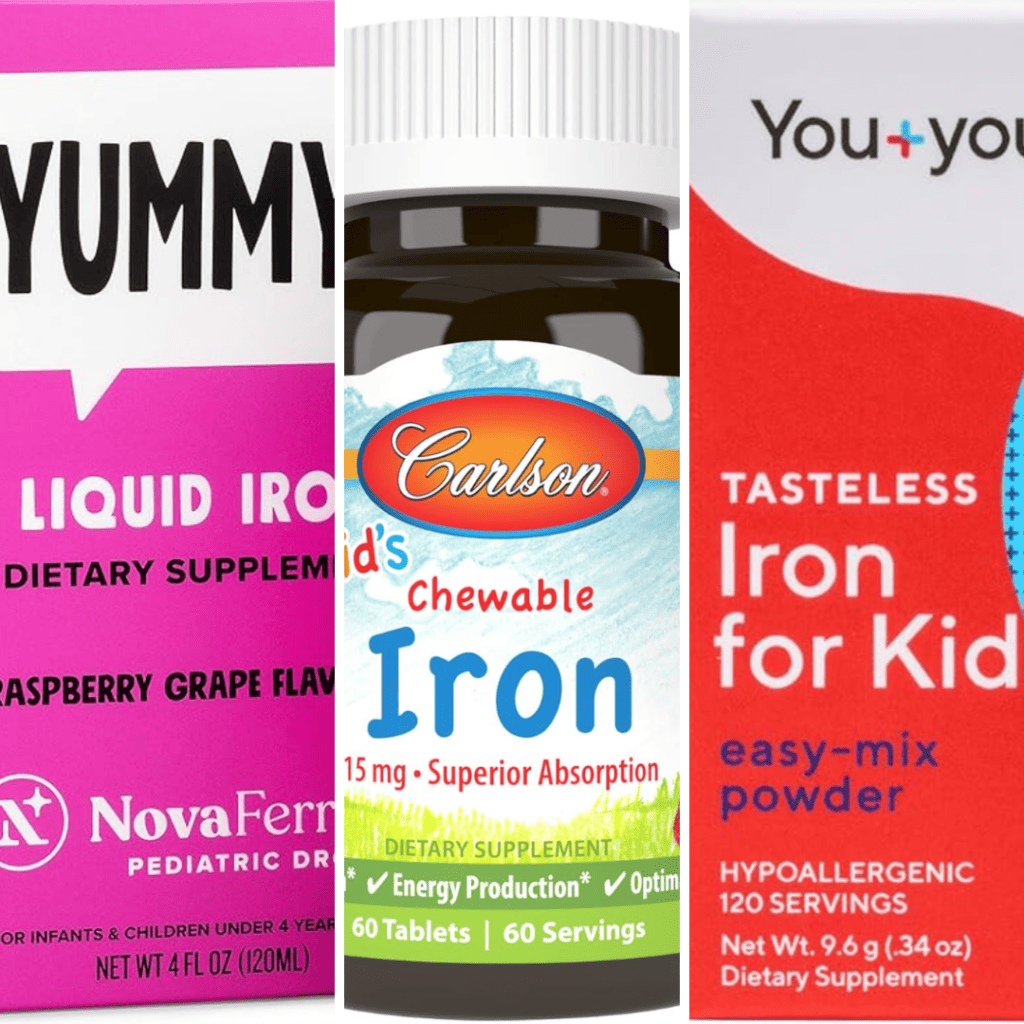
Give the Right Dose of Iron
When children and teens have an iron deficiency, treatment should focus on iron supplementation with a goal of correcting the deficiency as quickly as possible. The iron treatment dose is:
- Infants/toddlers: 3 mg/kg/day
- Older children/teens: 325 mg (65 mg elemental iron) once daily
Most brands of iron supplementation tend to deliver between 9 and 18 mg elemental iron per dose. Make sure to read the package label for proper dosing and adjust based on your healthcare providers direction on optimal dose.
Take Iron with a Source of Vitamin C for Optimal Absorption
Iron drops can be taken with a small amount of orange juice or water, on an empty stomach or with a meal. Some products add vitamin C to increase iron absorption. Do not give iron supplements with dairy foods. Calcium interferes with iron absorption.
Recheck Iron Status
Assess your child’s ferritin level after 3 or more months on iron supplements. The goal is to see ferritin levels rise to above 20 ng/mL. Some children will need to be on iron supplementation longer.



